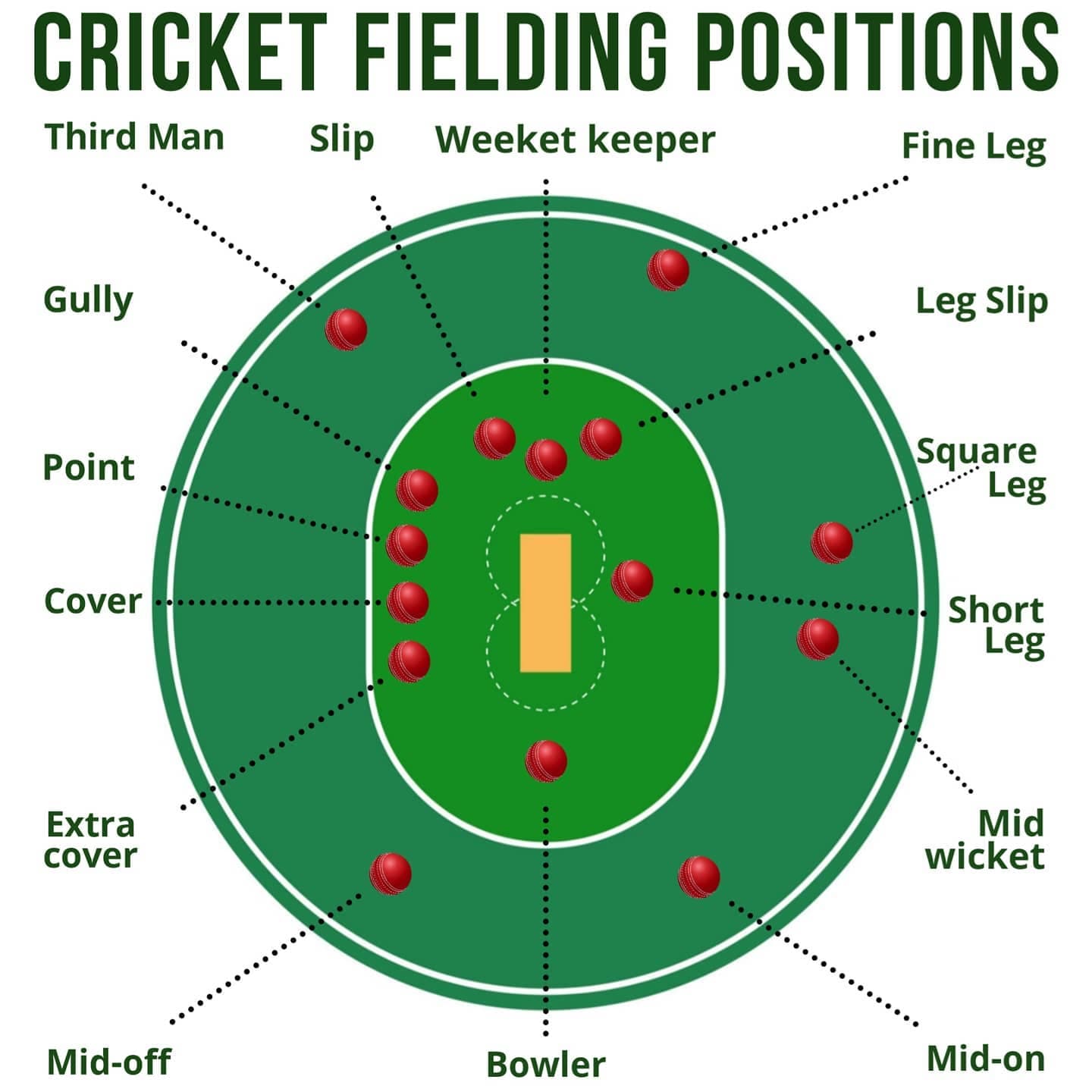How Fielding Positions in Cricket Work: What Every Fan Should Know
Whether you’re a die-hard fan or someone just getting into cricket, understanding fielding positions in cricket adds a whole new...

Whether you’re a die-hard fan or someone just getting into cricket, understanding fielding positions in cricket adds a whole new layer of fun and insight to the game.
Each position on the field has a specific purpose. It’s not random—there’s a plan behind every move. When you know how it all works, the game makes a lot more sense.
Let’s break it down in the simplest way possible. No jargon, just straightforward info that every cricket fan should know.
What Are Fielding Positions in Cricket?
In cricket, fielding positions refer to where players stand on the field when a team is bowling. These spots aren’t fixed. They change based on the batsman’s style, the bowler’s plan, and the match format.
There are over 20 fielding positions used commonly in cricket. Some are close to the batsman, others are way out near the boundary. The captain decides where to place each fielder for the best chance of stopping runs or getting a wicket.
Why Do Fielding Positions Matter?
Fielding isn’t just about stopping the ball. It’s about creating pressure, saving boundaries, and grabbing quick chances. Proper fielding positions can change the course of a match.
Here’s why they matter:
- Control the game’s pace
- Stop scoring shots
- Create wicket-taking opportunities
- Support the bowler’s plan
For example, when a batter is known for pulling short balls, a captain might place a deep square leg to catch a mistimed shot. Smart field placement often leads to easy dismissals.
The Basics of Cricket Field Layout
Before diving into each position, let’s look at the basic structure of a cricket field.
- The field is oval-shaped with the pitch in the center.
- It’s split into two sides based on the batsman’s stance:
- Off Side: The side the batsman faces.
- Leg Side (On Side): The side behind the batsman.
The field also has three main zones:
- Close Catching Area (within 15 yards)
- Inner Circle (up to 30 yards)
- Outfield (up to the boundary)
Key Fielding Positions and What They Do
Understanding each position helps you see how the team sets up a strategy. Let’s go through the most common ones.
Wicket-Keeper
- Stands directly behind the stumps
- Catches balls missed by the batsman
- Involved in stumpings and run-outs
Slips (1st, 2nd, 3rd)
- Next to the keeper on the off side
- Catch edged deliveries
- Used mainly with fast bowlers
Gully
- A bit squarer than slips
- Catches slices and thick edges
Point
- Square on the off side
- Stops cut shots and sharp singles
Cover
- In front of point, on the off side
- Fields drives and attacking shots
Mid-Off and Mid-On
- Straight on either side of the pitch
- Used to stop straight drives and return throws
Square Leg
- Square on the leg side
- Handles flicks and sweep shots
Fine Leg
- Near the boundary behind the batsman
- Stops glances and edges down the leg side
Third Man
- Behind the wicket on the off side
- Catches deflected edges from fast bowlers
Long-Off and Long-On
- Near the boundary straight ahead
- Catch lofted shots from attacking batters
How Do Captains Choose Fielding Positions?
Captains aren’t just guessing when they move fielders around. They think about:
- The batter’s strengths and weaknesses
- The bowler’s style (pace or spin)
- The match format and pressure situation
- Where the last few shots were played
For example, in a T20 match, where batters aim to hit big, you’ll see more fielders near the boundary. In Test matches, more close catchers are used to take early wickets.
Close vs. Deep Fielding Positions
Close Fielders
These are placed near the batsman to catch quick chances or create pressure.
- Slip
- Gully
- Silly Point
- Short Leg
- Leg Slip
Deep Fielders
These are positioned near the boundary to prevent fours and sixes.
- Deep Point
- Deep Cover
- Long-Off
- Long-On
- Deep Square Leg
- Deep Fine Leg
Get your Red Leather Ball now.
Fielding Adjustments in Different Formats
Test Matches
- Focus on taking wickets
- Close-in fielders are more common
- Slower pace, more patience required
ODIs
- Powerplays restrict fielders outside the 30-yard circle
- Mix of infield and boundary protection
- Strategic adjustments after every 10 overs
T20s
- Fielders often placed on the boundary
- Designed to block big shots
- More dynamic movement between overs
Try Our Free : Duckworth Lewis Calculator
What Skills Suit Which Positions?
Not every player can field everywhere. Captains choose based on the player’s skills:
- Quick hands? Go close like slip or silly point
- Strong arm? You’ll be in the deep, near long-on or cover boundary
- Agile and alert? Cover, point, or midwicket
Matching the right skill with the right position makes the field more effective.
Common Terms Fans Should Know
- Silly Point: Very close to the batsman on the off side
- Short Leg: Close-in on the leg side
- Leg Slip: Like a slip but behind on the leg side
- Backward Point: Slightly behind square on the off side
- Extra Cover: Between cover and mid-off
Quick Tips to Remember Fielding Positions
- Watch cricket with a fielding diagram open
- Pay attention to bowler-batsman matchups
- Try calling out fielding setups when watching live
- Practice by drawing positions on paper or apps
Try Our Free : Nrr Calculator
Final Words
Now you know how fielding positions in cricket work. It’s more than just standing around waiting for the ball. Every move has meaning. Every placement supports a strategy.
The next time you watch a match, see where the fielders are. You’ll notice how smart the captain’s plan is. And you’ll enjoy the game even more.
FAQs About Fielding Positions in Cricket
What is the purpose of fielding positions in cricket?
To stop runs, take wickets, and support bowling strategy effectively.
Who decides fielding positions on the field?
Usually the captain, often with input from the bowler and coach.
How many fielders can be outside the circle in ODIs?
During powerplays, only two; later, up to five can be placed outside the 30-yard circle.
Where is the gully position in cricket?
It’s located between the slip cordon and point on the off side, close to the batsman.
Why do fielding positions keep changing during a match?
They change based on the batter’s style, the bowler’s plan, and match conditions.



